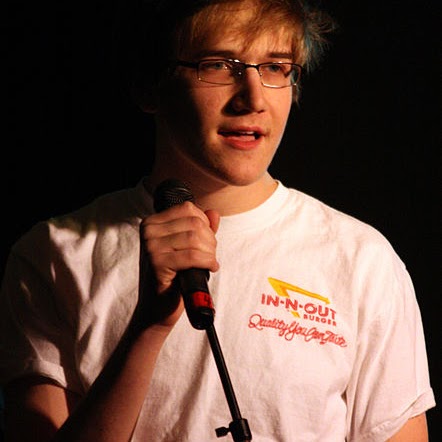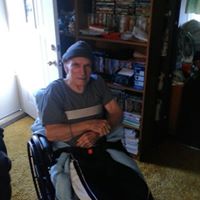Robert E Burnham
age ~78
from Louisville, CO
- Also known as:
-
- Robert Earle Burnham
- Robert F Burnham
- Robert H Burnham
- Rob E Burnham
- Bob E Burnham
- Robert Burnhand
- Burnham Robert
Robert Burnham Phones & Addresses
- Louisville, CO
- 2065 Oakland Ave, Oakland, CA 94611 • 510 601-1562
- Piedmont, CA
- Westerville, OH
- Louisville, CO
- 1201 Kennedy Ave, Louisville, CO 80027
Work
-
Position:Service Occupations
Education
-
Degree:High school graduate or higher
Us Patents
-
Location- And Direction-Enhanced Automatic Reminders Of Appointments
view source -
US Patent:7990266, Aug 2, 2011
-
Filed:Sep 9, 2010
-
Appl. No.:12/878583
-
Inventors:Robert Burnham - Idaho Springs CO, US
Cliff Howard - Dacono CO, US
Susan Love - Broomfield CO, US
Paul Madsen - Englewood CO, US
John Rishea - Denver CO, US -
Assignee:Avaya Inc. - Basking Ridge NJ
-
International Classification:G08B 1/08
-
US Classification:34053913, 34053926, 340988, 340994, 3409951, 701117, 701202, 701206, 701207, 701213
-
Abstract:An automatic appointment reminder system uses location and/or direction of travel of the reminder recipient relative to appointments to affect the time of sending of appointment reminders to the user, and thus enhances the user's ability to be on-time for appointments.
-
Virtual Office Presence Bridge
view source -
US Patent:8064487, Nov 22, 2011
-
Filed:Apr 17, 2006
-
Appl. No.:11/406054
-
Inventors:James Lee Armstrong - Arvada CO, US
Robert D. Burnham - Idaho Springs CO, US
Cliff L. Howard - Dacono CO, US
Susan K. Love - Broomfield CO, US
Paul Michael Madsen - Denver CO, US
John Vincent Rishea - Denver CO, US -
Assignee:Avaya Inc. - Basking Ridge NJ
-
International Classification:H04J 99/00
H04L 12/28
H04M 3/42 -
US Classification:370546, 370259, 37920101
-
Abstract:Systems and methods for providing a communication bridge between a physical location and a virtual location are provided. In particular, the presence of a visitor to a physical location is detected, and notification of the presence of a visitor is provided to a user associated with the physical location. The notification may include an identification of the visitor. Following notification, real-time communications between the visitor at the first physical location and the user at the virtual location are established, without requiring entry of a communication address for the virtual office of the user by the visitor.
-
Presence-Based Mechanism To Include Visiting Associates In Location-Specific Email Distribution Lists
view source -
US Patent:8510472, Aug 13, 2013
-
Filed:Sep 27, 2007
-
Appl. No.:11/862384
-
Inventors:Jeffrie D. Anderson - Arvada CO, US
Robert D. Burnham - Idaho Springs CO, US
Brijen Doshi - Thornton CO, US
Susan K. Love - Broomfield CO, US
John V. Rishea - Denver CO, US
John M. Swanagon - Highlands Ranch CO, US -
Assignee:Avaya Inc. - Basking Ridge NJ
-
International Classification:G06F 12/00
-
US Classification:709245, 709206, 709223
-
Abstract:The present invention provides methods, devices, and systems for managing message distribution lists. More specifically, the message distribution list may be location-specific and the recipients listed in the list may be dynamically updated based on their detected presence with respect to a particular location. By dynamically updating a message distribution list based on presence information, recipients of the message can be provided with a greater assurance that the messages they receive are locally relevant.
-
Channeled Substrate Laser With Distributed Feedback
view source -
US Patent:43027296, Nov 24, 1981
-
Filed:May 15, 1979
-
Appl. No.:6/039424
-
Inventors:Robert D. Burnham - Los Altos Hills CA
Donald R. Scifres - Los Altos CA
William Streifer - Palo Alto CA -
Assignee:Xerox Corporation - Stamford CT
-
International Classification:H01S 319
-
US Classification:331 945H
-
Abstract:A solid state laser in which transverse mode control is achieved by a layer of non-uniform thickness adjacent the laser active region and longitudinal mode control is achieved by a periodic structure formed in the laser substrate. The layer of non-uniform thickness is provided by forming the layer on a channeled substrate, and the teeth of the periodic structure extend in a direction transverse to the direction of the channel.
-
Transverse Light Emitting Electroluminescent Devices
view source -
US Patent:43096700, Jan 5, 1982
-
Filed:Sep 13, 1979
-
Appl. No.:6/075381
-
Inventors:Robert D. Burnham - Los Altos Hills CA
Donald R. Scifres - Los Altos CA
William Streifer - Palo Alto CA -
Assignee:Xerox Corporation - Stamford CT
-
International Classification:H01S 319
-
US Classification:331 945H
-
Abstract:Improved lateral carrier and optical confinement is achieved in heterostructure diodes and lasers having a Fabry-Perot cavity transverse to the plane of the p-n junction of the device. Structural features during fabrication improve carrier confinement to the active region in the established optical cavity. Current confinement means is also fabricated above and below the active region to concentrate the current density to the active region in the optical cavity and thereby improve the overall gain of the device. Such confinement also enhances optical confinement along the cavity. Several reflector structures are disclosed for employment at the cavity ends to provide optical feedback.
-
Method Of Forming Light Emitting Diode Array With Dome Geometry
view source -
US Patent:39545342, May 4, 1976
-
Filed:Oct 29, 1974
-
Appl. No.:5/518335
-
Inventors:Donald R. Scifres - Los Altos CA
Robert D. Burnham - Los Altos Hills CA -
Assignee:Xerox Corporation - Stamford CT
-
International Classification:H01L 750
-
US Classification:156 7
-
Abstract:A structure for providing arrays or individual hemispherical diodes and methods of producing the diodes. When the diode array is to be part of a configuration utilizing a substrate, the substrate is selected to have radiation transparency, a lower refractive index, and lattice constant and lattice structure similar to that of a crystal layer grown in hemispheres formed in the substrate. When the diode array is to be removed from the substrate, a material that can be preferentially etched is grown between the hemispheres formed in the substrate and the grown crystal layer that is to have light emitting areas.
-
Nonplanar Substrate Injection Lasers Grown In Vapor Phase Epitaxy
view source -
US Patent:44334176, Feb 21, 1984
-
Filed:May 29, 1981
-
Appl. No.:6/268596
-
Inventors:Robert D. Burnham - Palo Alto CA
Donald R. Scifres - Los Altos CA
William Streifer - Palo Alto CA -
Assignee:Xerox Corporation - Stamford CT
-
International Classification:H01S 319
-
US Classification:372 45
-
Abstract:In a semiconductor injection laser with a nonplanar pattern in the substrate, growth of the plurality of layers comprising the laser structure is accomplished in vapor phase epitaxy to produce a lateral spatial thickness variation (LSTV) in the active region of the laser. The LSTV profile is one of or combination of the profiles disclosed in FIG. 2, producing an effective, although small, lateral refractive index variation in the active region, thereby permitting the maintenance of the lowest order transverse mode along the plane of the active region.
-
Integrated Grating Output Coupler In Diode Lasers
view source -
US Patent:40064328, Feb 1, 1977
-
Filed:Oct 15, 1974
-
Appl. No.:5/515120
-
Inventors:William Streifer - Palo Alto CA
Donald R. Scifres - Los Altos CA
Robert D. Burnham - Los Altos Hills CA -
Assignee:Xerox Corporation - Stamford CT
-
International Classification:H01S 319
H01S 3081 -
US Classification:331 945C
-
Abstract:A heterojunction diode laser which produces a highly collimated, polarized light beam perpendicular to the plane of the PN junction of the laser rather than through cleaved end faces in the plane of the PN junction. The diode laser includes a periodic structure which is buried at a heterojunction interface and in contact with a light waveguide layer. The periodic structure acts to produce the feedback necessary for lasing. If the spacing of the teeth of the periodic structure are an integer number of wavelengths of the light photons produced in the laser, the light beam exits at an angle perpendicular to the plane of the PN junction. If a tooth spacing is chosen that is not equal to an integer number of wavelengths of the light photons produced in the laser, the light beam may emerge from the diode at an angle other than the normal with the specific angle determined by the particular tooth spacing. To increase output intensity, the ends of the laser perpendicular to the plane of the PN junction and parallel to the teeth of the periodic structure may be cleaved and coated with a highly light reflective film.
Medicine Doctors

Robert D. Burnham
view sourceSpecialties:
Pediatrics, Adolescent Medicine
Work:
Roswell Pediatric Center PC
12385 Crabapple Rd STE 200, Alpharetta, GA 30004
770 343-9900 (phone), 770 343-8759 (fax)
Roswell Pediatric Center PC
3400 Old Milton Pkwy STE C545, Alpharetta, GA 30005
770 751-0800 (phone), 770 751-7198 (fax)
Roswell Pediatric Center PC
110 N Cor Pkwy STE 100, Cumming, GA 30040
770 888-2882 (phone), 770 888-5562 (fax)
12385 Crabapple Rd STE 200, Alpharetta, GA 30004
770 343-9900 (phone), 770 343-8759 (fax)
Roswell Pediatric Center PC
3400 Old Milton Pkwy STE C545, Alpharetta, GA 30005
770 751-0800 (phone), 770 751-7198 (fax)
Roswell Pediatric Center PC
110 N Cor Pkwy STE 100, Cumming, GA 30040
770 888-2882 (phone), 770 888-5562 (fax)
Education:
Medical School
Indiana University School of Medicine
Graduated: 1986
Indiana University School of Medicine
Graduated: 1986
Procedures:
Destruction of Benign/Premalignant Skin Lesions
Hearing Evaluation
Psychological and Neuropsychological Tests
Pulmonary Function Tests
Vaccine Administration
Hearing Evaluation
Psychological and Neuropsychological Tests
Pulmonary Function Tests
Vaccine Administration
Conditions:
Abdominal Hernia
Acute Bronchitis
Acute Pharyngitis
Acute Sinusitis
Anemia
Acute Bronchitis
Acute Pharyngitis
Acute Sinusitis
Anemia
Languages:
English
Description:
Dr. Burnham graduated from the Indiana University School of Medicine in 1986. He works in Alpharetta, GA and 2 other locations and specializes in Pediatrics and Adolescent Medicine. Dr. Burnham is affiliated with Northside Hospital and Northside Hospital Forsyth.
License Records
Robert A Burnham
License #:
NA13832 - Expired
Category:
Nursing Assistant
Issued Date:
Jul 7, 1993
Expiration Date:
Jun 30, 1996
Type:
Nursing Assistant
Lawyers & Attorneys

Robert Dee Burnham - Lawyer
view sourceLicenses:
Minnesota - Authorized to practice 2013

Robert Michael Burnham Jr. - Lawyer
view sourceLicenses:
Virginia - Authorized to practice law 1980
Name / Title
Company / Classification
Phones & Addresses
President
Success Carpet Cleaning
S C C Services Inc
Carpet & Rug Cleaners
S C C Services Inc
Carpet & Rug Cleaners
1265 Charter Hill Dr, Coquitlam, BC V3E 1P1
604 931-3422
604 931-3422
President
Success Carpet Cleaning
Carpet & Rug Cleaners
Carpet & Rug Cleaners
604 931-3422
Engineer
Avaya Inc
On-Line Service Provider · Mfg Telephone/Telegra Apparatus · Nonclassifiable Establishments · Computer Systems Design · Cell Phone Service · Telephone Communication, Except Radio · Prepackaged Software · Electrical Repair Shops
On-Line Service Provider · Mfg Telephone/Telegra Apparatus · Nonclassifiable Establishments · Computer Systems Design · Cell Phone Service · Telephone Communication, Except Radio · Prepackaged Software · Electrical Repair Shops
528 Zircon Way, Westminster, CO 80027
1300 W 120 Ave, Denver, CO 80234
1200 W 120 Ave, Denver, CO 80234
8740 Lucent Blvd, Littleton, CO 80129
720 444-2758, 303 354-8999, 908 953-6000, 303 280-8320
1300 W 120 Ave, Denver, CO 80234
1200 W 120 Ave, Denver, CO 80234
8740 Lucent Blvd, Littleton, CO 80129
720 444-2758, 303 354-8999, 908 953-6000, 303 280-8320
2209 Carmelita LLC
2201 Carmelita Dr, San Carlos, CA 94070
751 Laurel St, San Carlos, CA 94070
751 Laurel St, San Carlos, CA 94070
Burnham Family Limited Partnership Agreement No. 1 L.P., The
751 Laurel St, San Carlos, CA 94070
964 Laurel St, San Carlos, CA 94070
964 Laurel St, San Carlos, CA 94070
Principal
St Andrew Society of Colo
Business Services at Non-Commercial Site
Business Services at Non-Commercial Site
16357 W 76 Ave, Arvada, CO 80007
President
Ting Jen Consultants Inc
Business Consulting Services
Business Consulting Services
2065 Oakland Ave, Oakland, CA 94611
President
HUGH H. MACDONALD CO
2215 S El Camino Real RM 201, San Mateo, CA 94403
Isbn (Books And Publications)
-
Burnham'S Celestial Handbook: An Observer'S Guide To The Universe Beyond The Solar System
view source -
Author:Robert Burnham
-
ISBN #:0486235688
-
Burnham'S Celestial Handbook: An Observer'S Guide To The Universe Beyond The Solar System
view source -
Author:Robert Burnham
-
ISBN #:0486236730
-
The Star Book
view source -
Author:Robert Burnham
-
ISBN #:0521258332
-
Comet Hale-Bopp: Find And Enjoy The Great Comet
view source -
Author:Robert Burnham
-
ISBN #:0521586364
-
Great Comets
view source -
Author:Robert Burnham
-
ISBN #:0521646006
-
Exploring The Starry Sky
view source -
Author:Robert Burnham
-
ISBN #:0521802512
-
Backyard Astronomy: Your Guide To Starhopping And Exploring The Universe
view source -
Author:Robert Burnham
-
ISBN #:0737000961
-
Advanced Skywatching: The Backyard Astronomer'S Guide To Starhopping And Exploring The Universe
view source -
Author:Robert Burnham
-
ISBN #:0783549415
Classmates

Robert Burnham
view sourceSchools:
Kinney Elementary School Mt. Pleasant MI 1953-1957, Nativity Lutheran School Detroit MI 1957-1962
Community:
Cynthia Wagus, Andrea Montgomery

Robert Burnham
view sourceSchools:
Lutheran West High School Detroit MI 1978-1982
Community:
Cynthia Wagus, Andrea Montgomery

Robert Burnham
view sourceSchools:
Brown Elementary School South Portland ME 1954-1959, Washburn Elementary School Auburn ME 1959-1960, Ella R. Hodgkins Junior High School Augusta ME 1960-1963, Lou M. Buker Junior High School Augusta ME 1960-1963
Community:
Sheila Bartlett, Charles Ladd

Robert Burnham
view sourceSchools:
Ragland High School Ragland AL 1975-1979
Community:
Vera Dial, Kaye Bice

Robert Burnham
view sourceSchools:
Arnco - Sargent Elementary School Newnan GA 1955-1963, Western High School Newnan GA 1963-1967
Community:
Ruth Sissy, Brenda Stanley, Betty Whatley

Robert Burnham
view sourceSchools:
Liberty-Eylau Primary School Texarkana TX 1998-2002
Community:
Jeff Wilson, Dawn Mcgregor, Adam Norman, Don Clark, Sonja Blundell

Robert Burnham
view sourceSchools:
South Royalton High School South Royalton VT 1994-1998
Community:
Carol Shepard, Philip Jacobs, Tina Lord, Gary Vittum

Robert Burnham
view sourceSchools:
Piedra Vista High School Farmington NM 2000-2003
Community:
Cali Hazen, Kathrine Clark, Edna Smith
Flickr
Googleplus

Robert Burnham

Robert Burnham

Robert Burnham

Robert Burnham

Robert Burnham

Robert Burnham

Robert Burnham

Robert Burnham
Plaxo

Robert Burnham
view sourceMacon, Georgia USAController at Prince Service & Mfg., Inc.

Robert Burnham
view sourceRetired

Robert Angela Burnham
view source
Robert J Burnham
view source
Robert E. Burnham
view source
Robert Burnham
view source
Robert Burnham
view source
Robert Burnham
view source
Robert Burnham
view source
Robert Burnham
view sourceYoutube
Get Report for Robert E Burnham from Louisville, CO, age ~78













